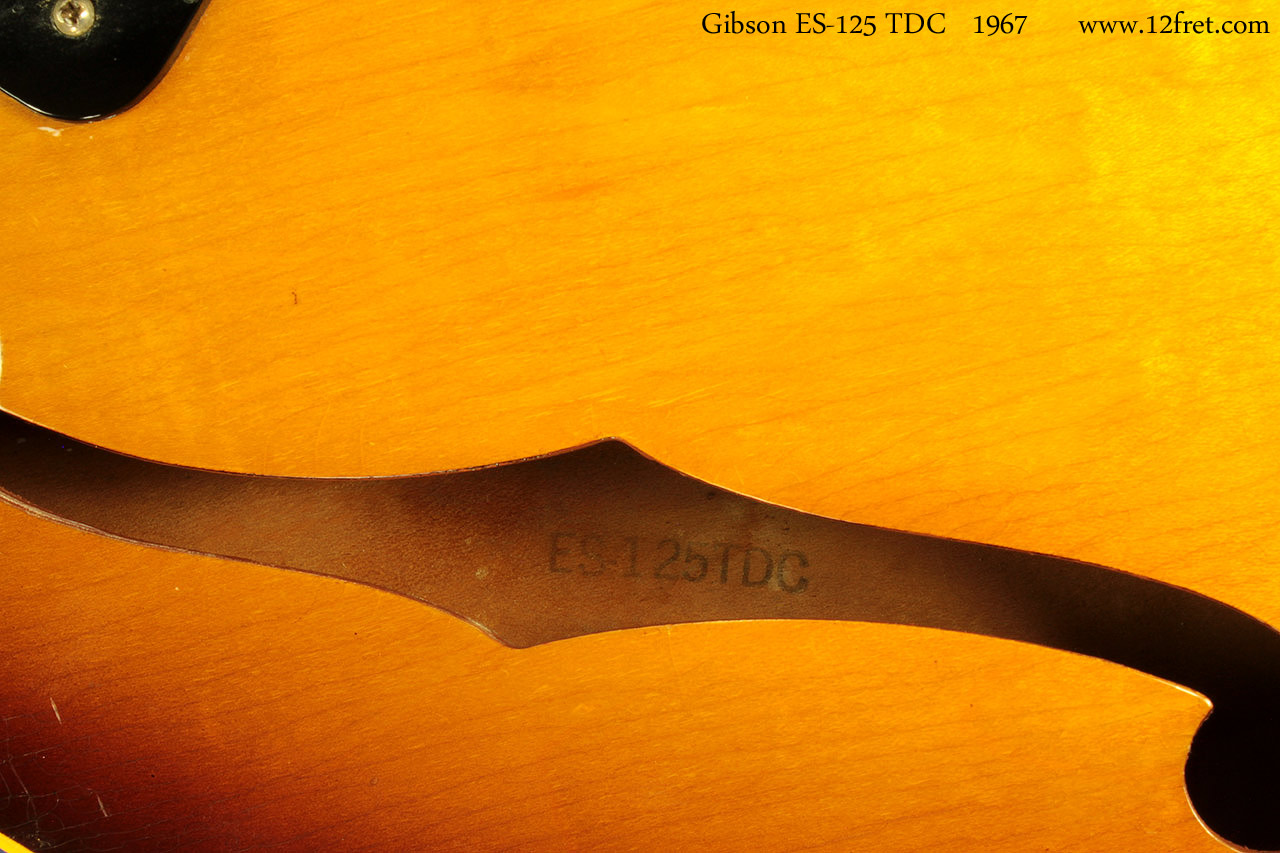
Since the fingerboard sits flush to the body (as opposed to an ES-175) the ES-125 requires a shorter neck pickup than a typical dogear. The ES-125 also used a tapered dogear cover for their neck position pickups with a thickness of 4/16" on the treble side and 5/16" on the bass side. The model used for the ES-125 has a string spacing on the neck pickup of 1 15⁄ 16" from high E to low E. In 1950 the P90 transitioned to 6 adjustable poles between two Alnico 5 bar magnets. The original had 6 Alnico slug pole pieces. The ES-125 was equipped with one P90 pickup. One non-adjustable P-90 pickup with "dog ears".Both the thinline and the regular models would be discontinued by the 1970s. It would later add options for double P-90 pickups and a sharp cutaway, referred to as a florentine cutaway, similar to the ES-175. In the mid-1950s, the ES-125T was introduced, which was an entry-level thinline archtop electric guitar based on the original ES-125.

The unbound rosewood fingerboard initially sported pearl trapezoid inlays later, it would have dot inlays. When reintroduced in 1946 it had the larger 16.25" wide body that the ES-150 had. The pre-war model, discontinued in 1942, had a smaller 14.5" body. It had one P-90 single-coil pickup in the neck position, a single volume control and a single tone control. Having said this, there are a lot worse guitars out there, and as well as being historically important, the 1820 bass can certainly provide the goods when required.Introduced in 1941 as the successor to the ES-100, the ES-125 was an entry-level archtop electric guitar. Over the course of the 70s, the Japanese output improved dramatically, and in many ways these early 70s models are a low point for the brand. These new Epiphones were based on existing Matsumoku guitars, sharing body shapes, and hardware, but the Epiphone line was somewhat upgraded, with inlaid logos and a 2x2 peghead configuration. The Matsumoku factory had been producing guitars for export for some time, but the 1820 bass (alongside a number of guitar models and the 5120 electric acoustic bass) were the first Epiphone models to be made there.

By the end of the 1960s, a decision had been made to move Epiphone guitar production from the USA (at the Kalamazoo plant where Gibson guitars were made), to Matsumoto in Japan, creating a line of guitars and basses significantly less expensive than the USA-built models (actually less than half the price).


 0 kommentar(er)
0 kommentar(er)
